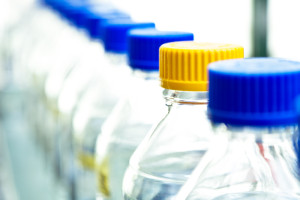 The public is bombarded every day with contradictory science and claims involving environmental risks. It can get so confusing and so many of us would rather turn off the noise than sift through the facts. Take BPA, for example, also known as bisphenol-A, which is an industrial chemical used in plastics and ubiquitous in the environment, found in trace amounts in over 90% of children. To some, it is the chemical from hell, linked to every ailment known to human kind, including heart disease, prostate cancer, neurological defects, diabetes, and obesity to name a few. But stop the presses. The European Food Safety Authority (EFSA) announced this past week that BPA is safe. Here’s the press release:
The public is bombarded every day with contradictory science and claims involving environmental risks. It can get so confusing and so many of us would rather turn off the noise than sift through the facts. Take BPA, for example, also known as bisphenol-A, which is an industrial chemical used in plastics and ubiquitous in the environment, found in trace amounts in over 90% of children. To some, it is the chemical from hell, linked to every ailment known to human kind, including heart disease, prostate cancer, neurological defects, diabetes, and obesity to name a few. But stop the presses. The European Food Safety Authority (EFSA) announced this past week that BPA is safe. Here’s the press release:
EFSA’s comprehensive re-evaluation of bisphenol A (BPA) exposure and toxicity concludes that BPA poses no health risk to consumers of any age group (including unborn children, infants and adolescents) at current exposure levels. Exposure from the diet or from a combination of sources (diet, dust, cosmetics and thermal paper) is considerably under the safe level (the “tolerable daily intake” or TDI).
Although new data and refined methodologies have led EFSA’s experts to considerably reduce the safe level of BPA from 50 micrograms per kilogram of body weight per day (µg/kg of bw/day) to 4 µg/kg of bw/day, the highest estimates for dietary exposure and for exposure from a combination of sources (called “aggregated exposure” in EFSA’s opinion) are three to five times lower than the new TDI.
Uncertainties surrounding potential health effects of BPA on the mammary gland, reproductive, metabolic, neurobehavioural and immune systems have been quantified and factored in to the calculation of the TDI. In addition, the TDI is temporary pending the outcome of a long-term study in rats, which will help to reduce these uncertainties.
How can this be? Well let’s begin by saying this is good news, as EFSA is an uber-conservative organization, and the findings mean that the typical dose of BPA that most of us get each day from our diet (drinking from plastic bottles and eating from tupperware) is significantly lower than even the most conservative health advisories.
However, it turns out BPA may still have some bad side effects and BPA substitutes, such as bisphenol-S, advertised as “BPA-Free” may be even more harmful – and linked to hyperactivity, as reported by Amy Ellis Nutt in WaPo. Here is a 2014 Scientific American article by Jenna Bilbrey titled BPA-free plastic containers may be just as hazardous. As Ellis Nutt reports,
BPA is an industrial chemical found in many polycarbonate plastics as well as epoxy resins, which are used to coat the inside of food cans. Over the past few years, dozens of studies have linked BPA, which mimics estrogen, with prostate cancer, infertility, asthma, heart disease and a number of neurodevelopmental disorders.
Here is the study titled Low-dose exposure to bispheol A and replacement bisphenol S induce precious hypothalamic neurogenesis in embryonic zebrafish. This is a fancy way of saying BPA/BPS causes hyperactivity in young zebrafish, the same kind of zebras kept by aquarium enthusiasts.
Just as the EFSA was preparing its about-face, a new study links BPA to short-term effects on blood pressure, Exposure to Bisphenol A From Drinking Canned Beverage Increases Blood Pressure. And despite significant political pressure on The U.S. Food and Drug Administration over the last couple of years, the FDA refused to ban BPA:
FDA acknowledges the interest that many consumers have in BPA. FDA has performed extensive research and reviewed hundreds of studies about BPA’s safety. We reassure consumers that current approved uses of BPA in food containers and packaging are safe.
So what is the public to make of the conflicting studies and announcements, even today as EFSA says there no risks? Personally, I still think there is still a lot we do not know about BPA and its substitutes, and we should take each new study as a new data point in our collective scientific understanding. EFSA’s good news does not dismiss entirely the health and environmental concerns of BPA, nor does it refute lingering concern over the potential cumulative health effects of endocrine disruptors found with increasing regularity in the environment. But our policies must be informed by objective science and not feelings, emotions, or perceptions.
While many parents will be relieved to know they haven’t caused irreparable harm to their infants with plastic bottles, prudence and discretion remain the better part of valour with the increased prevalence of chemicals in our food and water supplies.
As a former environmental scientist, I conducted many human health and ecological risk assessments during my life time. And what I learned is that our perceptions and understanding of risk are often wrong or highly skewed. And, unfortunately, there are too many who are too quick to exploit scientific uncertainty to scaremonger for political or social gain. Life is filled with many risks and little, if any, certainty. Each day is filled with new information upon which individualized decisions are made, each accompanied with unique risks, and each of us must sift through the scientific evidence and reach our own conclusions.

